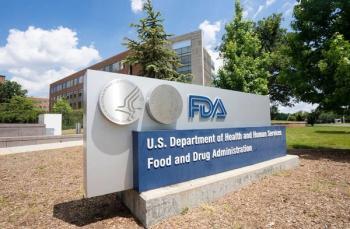
High-Dose Statins Lower Risks in Coronary Patients with Metabolic Syndrome
FRESNO, Calif. -- Pumping up the statin dose may decrease the risk for cardiovascular events in patients with coronary disease and metabolic syndrome.
FRESNO, Calif., Sept 5 -- Pumping up the statin dose may decrease the risk for cardiovascular events in patients with coronary disease and metabolic syndrome.
In a post-hoc analysis of the Treating to New Targets study, which compared high-dose Lipitor (atorvastatin) with a moderate-dose of the same drug in patients with stable coronary heart disease, high-dose Lipitor provided incremental protective benefits in patients with the metabolic syndrome.
So reported Prakash Deedwania, M.D., of the University of California San Francisco and the VA Central California Healthcare System here, in the Sept. 5 online edition of The Lancet for the Treating to New Targets Investigators.
The investigators also found that each component of metabolic syndrome -- hypertension, elevated plasma glucose, elevated serum triglycerides, low serum concentrations of HDL, and large waist circumference -- conferred a significantly greater risk on patients above that of coronary heart disease alone.
The benefit of aggressive statin therapy in these patients occurred regardless of the presence of diabetes, the investigators found.
The study was funded by Pfizer, the maker of Lipitor. All of the 11 co-authors have received consulting fees or research support, or both, from Pfizer, as well as other pharmaceutical companies, and one of the co-authors is an employee of Pfizer.
In an accompanying editorial, Andre J. Scheen, M.D., of the University of Liege in Belgium, said the results of the post-hoc analysis, combined with a separate analysis of high-dose versus low-dose statins in patients with coronary disease and diabetes (published in Diabetes Care) "lend further support to implementing lower lipid goals than those currently suggested by guidelines."
"However," Dr. Scheen added. "when treatment with high statin doses is considered, the selection of patients whose risk of major cardiovascular events is high enough to outweigh the potential risk of toxic drug-related effects is most important."
The Treating to New Targets Study was a randomized, double-blind, parallel-group trial comparing Lipitor at 80 mg daily with Lipitor at 10 mg daily as secondary prevention in 10,001 adults ages 35 to 75. Patients in the study had to have established stable coronary heart disease, which was defined as previous MI, previous or current angina with objective evidence of atherosclerotic coronary heart disease, or a history of coronary revascularization.
The current analysis looked at 5,584 of the patients who had metabolic syndrome as defined by the 2005 National Cholesterol Education Program Adult Treatment Panel III criteria.
The primary study endpoint was time to first major cardiovascular event: death from coronary heart disease; non-fatal, non-procedure-related myocardial infarction; resuscitated cardiac arrest; or fatal or non-fatal stroke.
Secondary endpoints included time to any cardiovascular event, major coronary event, any coronary events, cerebrovascular event, hospitalization for congestive heart failure, peripheral arterial disease, and all cause mortality.
The authors found that in the study population with the metabolic syndrome, the mean on treatment LDL concentrations at three months were 2.6 mmol/L (99.3 mg/dL) with the 10 mg dose. and 1.9 mmol/L (72.6 mg/dL) with the 80 mg dose.
The 80 mg dose was also associated with a 29% lower risk for major cardiovascular events at a median follow-up of 4.9 years, compared with the 10 mg dose. Major events occurred in 13% of patients who took the 10 mg dose of Lipitor, compared with 9.5% of those on the 80 mg dose. The hazard ratio for the 80 mg versus 10 mg dose was 0.71 (95% confidence interval, 0.61-0.84; P
In such cases, the presence of the metabolic syndrome could be a deciding factor, Dr. Scheen suggested.
"The two post-hoc analyses of Treating to New Targets in patients with diabetes or metabolic syndrome, or both, support the concept of the higher the risk, the greater the need to treat and to treat aggressively." he wrote. "This concept, already accepted in primary prevention, might be extended to secondary prevention, although such a suggestion requires further assessment,"
Newsletter
Enhance your clinical practice with the Patient Care newsletter, offering the latest evidence-based guidelines, diagnostic insights, and treatment strategies for primary care physicians.


























































































































































































































































































